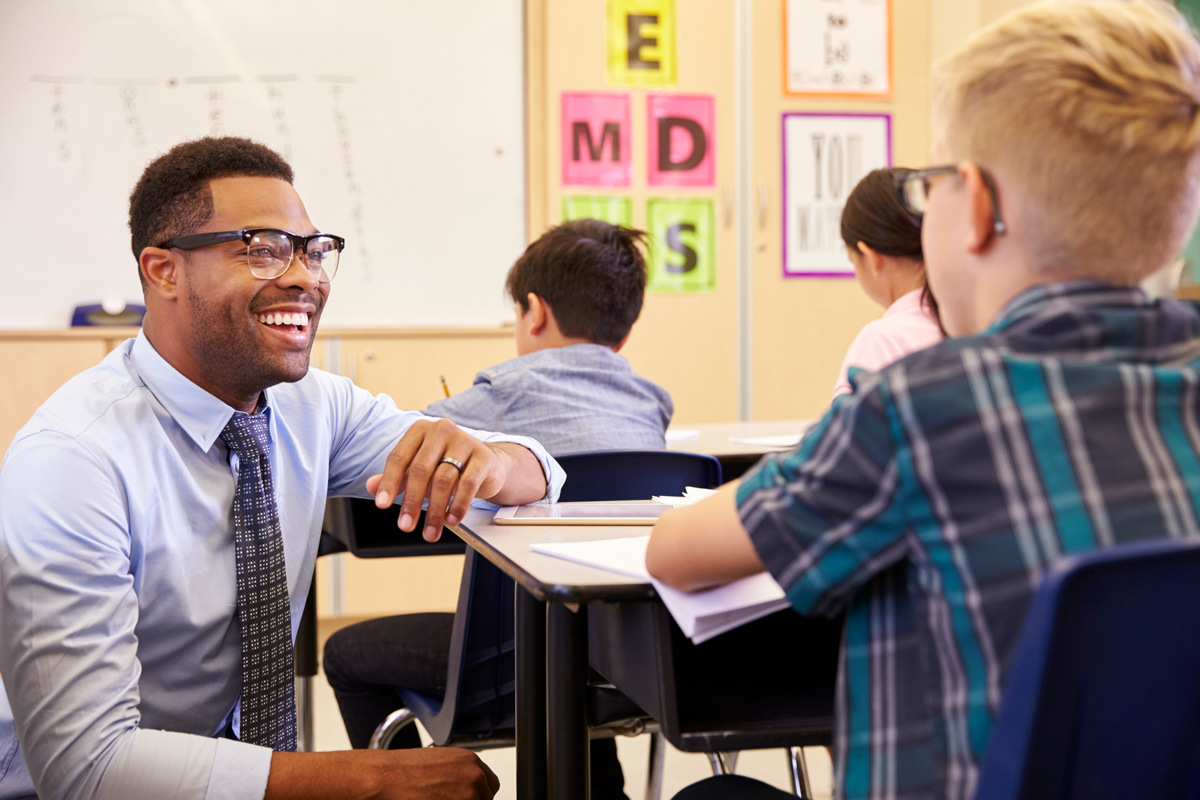Home>Maintenance & Safety>Safety Equipment & Products>What To Teach 5-6 Graders About Home Safety


Safety Equipment & Products
What To Teach 5-6 Graders About Home Safety
Published: December 21, 2023
Teach 5-6 graders about home safety with essential safety equipment and products. Ensure their well-being with practical knowledge and preventive measures. Explore more!
(Many of the links in this article redirect to a specific reviewed product. Your purchase of these products through affiliate links helps to generate commission for Storables.com, at no extra cost. Learn more)
Introduction
Teaching 5th and 6th graders about home safety is a crucial step in equipping them with the knowledge and skills to prevent accidents and handle emergencies. As children in this age group become more independent and curious, it is essential to empower them with the tools to recognize potential hazards and respond appropriately in various scenarios. By instilling a strong foundation in home safety, we can help these young individuals develop a sense of responsibility and confidence in keeping themselves and others safe.
In this comprehensive guide, we will explore the key aspects of home safety education for 5th and 6th graders, covering essential topics such as fire safety, electrical safety, poison prevention, water safety, stranger danger, and internet safety. By addressing these critical areas, we aim to provide valuable insights and practical tips that can make a meaningful difference in safeguarding children within their home environment.
Join us on this educational journey as we delve into the fundamental principles of home safety, offering valuable guidance and resources to empower 5th and 6th graders to become proactive advocates for their well-being and security. Let's embark on this important mission of nurturing a safety-conscious mindset and fostering a culture of preparedness and vigilance in the home setting.
Key Takeaways:
- Home safety education empowers 5th and 6th graders to recognize hazards, respond to emergencies, and create a secure living environment, fostering responsibility and vigilance.
- By learning about fire, electrical, poison, water, stranger, and internet safety, kids become proactive advocates for their well-being and contribute to a culture of safety at home and in their communities.
Importance of Home Safety Education
Home safety education plays a pivotal role in shaping the mindset and behaviors of 5th and 6th graders, providing them with the essential knowledge and skills to navigate potential risks and emergencies within their living environment. By instilling a strong foundation in home safety, we can empower children to become proactive and responsible individuals who are capable of identifying hazards and taking appropriate measures to mitigate potential dangers.
One of the primary reasons for emphasizing home safety education at this age is the increasing independence that children gain as they grow older. With greater freedom to explore their surroundings and engage in various activities, it becomes crucial to equip them with the necessary tools to recognize potential hazards and respond effectively in different scenarios. By imparting knowledge about home safety, we can help 5th and 6th graders develop a heightened sense of awareness and responsibility, enabling them to make informed decisions and take proactive steps to protect themselves and others.
Furthermore, home safety education fosters a culture of preparedness and resilience, instilling confidence in children to handle emergencies such as fires, electrical mishaps, poisoning incidents, and water-related accidents. By familiarizing them with safety protocols and preventive measures, we empower young individuals to act decisively and responsibly in the face of unexpected challenges, thereby reducing the likelihood of accidents and minimizing potential harm.
Moreover, home safety education serves as a cornerstone for promoting a safe and secure living environment, not only for children but for the entire family. By cultivating a shared understanding of safety practices and emergency procedures, 5th and 6th graders can actively contribute to creating a home environment that prioritizes well-being and vigilance. This collaborative approach to safety fosters a sense of community and mutual support, reinforcing the importance of looking out for one another and taking collective responsibility for maintaining a secure living space.
Ultimately, home safety education for 5th and 6th graders is instrumental in shaping responsible, informed, and safety-conscious individuals who are equipped to navigate the complexities of their living environment with confidence and resilience. By emphasizing the significance of home safety education, we empower young individuals to become proactive advocates for their well-being and active participants in fostering a culture of safety within their homes and communities.
Fire Safety
Fire safety is a critical component of home safety education for 5th and 6th graders, equipping them with essential knowledge and skills to prevent fires and respond effectively in the event of a fire emergency. Teaching children about fire safety not only raises awareness about potential fire hazards but also empowers them to take proactive measures to reduce the risk of fires and protect themselves and others.
One of the fundamental aspects of fire safety education is familiarizing children with common fire hazards within the home environment. This includes identifying potential sources of ignition such as stoves, candles, and electrical appliances, as well as recognizing flammable materials and substances. By raising awareness about these hazards, children can develop a keen eye for potential risks and take preemptive actions to minimize the likelihood of fires.
In addition to hazard recognition, 5th and 6th graders should be taught about fire prevention strategies, emphasizing the importance of responsible behavior and cautious practices. This involves educating children about the safe use of kitchen appliances, the proper handling of flammable materials, and the importance of never playing with matches or lighters. By instilling these preventive measures, children can actively contribute to creating a fire-safe environment within their homes.
Furthermore, fire safety education encompasses fire emergency preparedness, equipping children with the knowledge of how to respond in the event of a fire. This includes teaching them how to safely evacuate a building, the importance of feeling doors for heat before opening them, and the significance of having designated meeting points outside the home. Additionally, children should be familiarized with the operation of fire alarms and taught how to alert others about a fire emergency.
Moreover, educating 5th and 6th graders about the potential dangers of smoke inhalation and the importance of staying low to the ground in the event of a fire can significantly enhance their preparedness and safety awareness. By integrating practical drills and simulations, children can gain hands-on experience in executing fire evacuation procedures, reinforcing their ability to respond effectively and confidently during a fire emergency.
By emphasizing the principles of fire safety, we empower 5th and 6th graders to become proactive advocates for fire prevention and preparedness within their homes and communities. Through engaging and interactive educational initiatives, we can instill a safety-conscious mindset in children, fostering a culture of vigilance and responsibility that extends beyond the confines of the classroom and into their daily lives.
Electrical Safety
Electrical safety education is paramount for 5th and 6th graders, providing them with crucial knowledge and skills to recognize potential electrical hazards and adopt safe practices within their home environment. By instilling a strong foundation in electrical safety, children can develop a heightened awareness of electrical risks and learn how to navigate their living spaces with caution and responsibility.
One of the fundamental aspects of electrical safety education involves familiarizing children with common electrical hazards found in homes, such as exposed wiring, overloaded outlets, and damaged cords. By raising awareness about these hazards, children can develop a keen eye for potential risks and take proactive measures to minimize the likelihood of electrical accidents.
Furthermore, teaching 5th and 6th graders about the safe use of electrical appliances and devices is essential for promoting responsible behavior and minimizing the risk of electrical mishaps. Children should be educated on the proper handling of cords, plugs, and switches, emphasizing the importance of never using electrical devices near water or when hands are wet. Additionally, children should be encouraged to seek adult assistance when dealing with electrical repairs or issues.
Electrical safety education also encompasses the significance of using electrical outlets and extension cords responsibly, emphasizing the dangers of overloading circuits and the importance of using surge protectors. By instilling these preventive measures, children can actively contribute to creating an environment that prioritizes electrical safety within their homes.
Moreover, children should be taught about the importance of never inserting foreign objects into electrical outlets and the potential dangers of tampering with electrical components. By instilling a sense of caution and respect for electrical devices, 5th and 6th graders can develop a safety-conscious mindset that guides their interactions with electrical systems and appliances.
By integrating engaging and interactive educational initiatives, we can empower 5th and 6th graders to become proactive advocates for electrical safety, fostering a culture of vigilance and responsibility that extends beyond the confines of the classroom and into their daily lives. Through practical demonstrations and real-life scenarios, children can gain valuable insights into the principles of electrical safety, equipping them with the knowledge and confidence to navigate their living spaces with caution and resilience.
Poison Prevention
Poison prevention education is instrumental in equipping 5th and 6th graders with the knowledge and awareness to recognize potential poisons and adopt cautious practices within their home environment. By instilling a strong foundation in poison prevention, children can develop a heightened sense of responsibility and learn how to identify and respond to potential poisoning hazards effectively.
One of the fundamental aspects of poison prevention education involves familiarizing children with common household products and substances that can pose a poisoning risk, such as cleaning agents, medications, and certain plants. By raising awareness about these potential hazards, children can develop a keen eye for identifying poisonous substances and take proactive measures to avoid accidental ingestion or exposure.
Furthermore, teaching 5th and 6th graders about the importance of proper storage and handling of household chemicals and medications is essential for promoting responsible behavior and minimizing the risk of poisoning incidents. Children should be educated on the significance of keeping toxic substances out of reach and sight, as well as the importance of storing medications in secure and designated areas.
Poison prevention education also encompasses the significance of never consuming or tasting unfamiliar substances, emphasizing the importance of seeking adult guidance and clarification when encountering unknown products. By instilling these preventive measures, children can actively contribute to creating a safe environment that prioritizes poison prevention within their homes.
Moreover, children should be taught about the potential dangers of substance misuse and the importance of never accepting or consuming substances offered by others without parental approval. By instilling a sense of caution and skepticism, 5th and 6th graders can develop a safety-conscious mindset that guides their interactions with potential poisons and unfamiliar substances.
By integrating engaging and interactive educational initiatives, we can empower 5th and 6th graders to become proactive advocates for poison prevention, fostering a culture of vigilance and responsibility that extends beyond the confines of the classroom and into their daily lives. Through practical demonstrations and real-life scenarios, children can gain valuable insights into the principles of poison prevention, equipping them with the knowledge and confidence to navigate their living spaces with caution and resilience.
Teach 5-6 graders about home safety by discussing fire escape plans, how to use a fire extinguisher, and the importance of not opening the door to strangers.
Read more: What Is A Home Safety Walkthrough
Water Safety
Water safety education is essential for 5th and 6th graders, providing them with vital knowledge and skills to recognize potential water-related hazards and adopt cautious practices in and around aquatic environments. By instilling a strong foundation in water safety, children can develop a heightened awareness of water risks and learn how to navigate aquatic settings with responsibility and confidence.
One of the fundamental aspects of water safety education involves familiarizing children with potential hazards in and around bodies of water, such as swimming pools, lakes, rivers, and oceans. By raising awareness about these risks, children can develop a keen eye for identifying potential dangers and take proactive measures to minimize the likelihood of water-related accidents.
Furthermore, teaching 5th and 6th graders about the importance of swimming under adult supervision and in designated areas is crucial for promoting responsible behavior and minimizing the risk of water-related mishaps. Children should be educated on the significance of following safety rules at swimming pools and beaches, as well as the importance of never swimming alone or without permission.
Water safety education also encompasses the significance of understanding and respecting water currents, tides, and other natural factors that can pose risks to swimmers and recreational water enthusiasts. By instilling these preventive measures, children can actively contribute to creating a safe environment that prioritizes water safety in aquatic settings.
Moreover, children should be taught about the potential dangers of diving into shallow water and the importance of never engaging in reckless behavior or stunts near bodies of water. By instilling a sense of caution and respect for water environments, 5th and 6th graders can develop a safety-conscious mindset that guides their interactions with aquatic settings and recreational water activities.
By integrating engaging and interactive educational initiatives, we can empower 5th and 6th graders to become proactive advocates for water safety, fostering a culture of vigilance and responsibility that extends beyond the confines of the classroom and into their recreational and leisure activities. Through practical demonstrations and real-life scenarios, children can gain valuable insights into the principles of water safety, equipping them with the knowledge and confidence to navigate aquatic environments with caution and resilience.
Stranger Danger
Teaching 5th and 6th graders about “stranger danger” is crucial in equipping them with the knowledge and skills to recognize potential risks associated with unfamiliar individuals and adopt cautious practices in various social settings. By instilling a strong foundation in understanding stranger danger, children can develop a heightened awareness of potential threats and learn how to navigate social interactions with vigilance and confidence.
One of the fundamental aspects of educating children about stranger danger involves familiarizing them with the concept of strangers and distinguishing between safe and potentially risky encounters with unfamiliar individuals. By raising awareness about these distinctions, children can develop a keen sense of discernment and take proactive measures to minimize the likelihood of unsafe interactions.
Furthermore, teaching 5th and 6th graders about the importance of setting personal boundaries and recognizing suspicious behavior in unfamiliar individuals is essential for promoting responsible social conduct and minimizing the risk of potentially dangerous encounters. Children should be educated on the significance of trusting their instincts and seeking help from trusted adults when feeling uncomfortable or uncertain about a social interaction.
Stranger danger education also encompasses the significance of understanding and following safety guidelines when approached by unfamiliar individuals, whether in person or online. By instilling these preventive measures, children can actively contribute to creating a safe environment that prioritizes personal safety in social situations.
Moreover, children should be taught about the potential dangers of disclosing personal information to strangers and the importance of never accepting gifts, rides, or invitations from unfamiliar individuals without parental approval. By instilling a sense of caution and skepticism, 5th and 6th graders can develop a safety-conscious mindset that guides their interactions with unfamiliar individuals and social settings.
By integrating engaging and interactive educational initiatives, we can empower 5th and 6th graders to become proactive advocates for personal safety, fostering a culture of vigilance and responsibility that extends beyond the confines of the classroom and into their social interactions. Through role-playing scenarios and open discussions, children can gain valuable insights into the principles of stranger danger, equipping them with the knowledge and confidence to navigate social environments with caution and resilience.
Internet Safety
Internet safety education is paramount for 5th and 6th graders, providing them with essential knowledge and skills to navigate the online world responsibly and protect themselves from potential risks. By instilling a strong foundation in internet safety, children can develop a heightened awareness of digital threats and learn how to engage with online platforms with caution and confidence.
One of the fundamental aspects of internet safety education involves familiarizing children with the potential risks and dangers associated with internet usage, including exposure to inappropriate content, online predators, cyberbullying, and the importance of safeguarding personal information. By raising awareness about these risks, children can develop a keen eye for identifying potential online threats and take proactive measures to minimize the likelihood of encountering harmful content or individuals.
Furthermore, teaching 5th and 6th graders about the significance of responsible online behavior, including respectful communication, ethical digital citizenship, and the importance of seeking adult guidance when encountering unfamiliar or concerning content, is essential for promoting safe and positive interactions in the digital realm.
Internet safety education also encompasses the significance of understanding and utilizing privacy settings, as well as the importance of never sharing personal information, such as full names, addresses, or school details, with unknown individuals or on public platforms. By instilling these preventive measures, children can actively contribute to creating a safe digital environment that prioritizes privacy and responsible online conduct.
Moreover, children should be taught about the potential dangers of engaging in online conversations with strangers and the importance of reporting any suspicious or uncomfortable interactions to trusted adults. By instilling a sense of caution and discernment, 5th and 6th graders can develop a safety-conscious mindset that guides their online activities and interactions.
By integrating engaging and interactive educational initiatives, we can empower 5th and 6th graders to become proactive advocates for internet safety, fostering a culture of digital vigilance and responsibility that extends beyond the confines of the classroom and into their online experiences. Through age-appropriate discussions and real-life scenarios, children can gain valuable insights into the principles of internet safety, equipping them with the knowledge and confidence to navigate the digital landscape with caution and resilience.
Conclusion
Home safety education for 5th and 6th graders is a foundational component in nurturing responsible, informed, and safety-conscious individuals who are equipped to navigate potential hazards and emergencies within their living environment. By emphasizing essential topics such as fire safety, electrical safety, poison prevention, water safety, stranger danger, and internet safety, we empower children to develop a heightened sense of awareness and resilience, enabling them to make informed decisions and take proactive measures to protect themselves and others.
Through engaging and interactive educational initiatives, children can gain valuable insights into the principles of home safety, equipping them with the knowledge and confidence to navigate their living spaces with caution and responsibility. By integrating practical demonstrations, real-life scenarios, and open discussions, we foster a culture of vigilance and preparedness that extends beyond the confines of the classroom and into their daily lives.
By instilling a strong foundation in home safety, we empower 5th and 6th graders to become proactive advocates for their well-being and active participants in fostering a culture of safety within their homes and communities. This collaborative approach to safety not only promotes individual responsibility but also cultivates a sense of community and mutual support, reinforcing the importance of looking out for one another and taking collective responsibility for maintaining a secure living space.
Ultimately, home safety education serves as a cornerstone for promoting a safe and secure living environment, not only for children but for the entire family. By equipping young individuals with the necessary tools to recognize potential hazards and respond effectively in various scenarios, we contribute to the creation of a home environment that prioritizes well-being, preparedness, and vigilance.
As we continue to prioritize home safety education for 5th and 6th graders, we embark on an important mission of shaping responsible, informed, and safety-conscious individuals who are capable of navigating the complexities of their living environment with confidence and resilience. By emphasizing the significance of home safety education, we empower young individuals to become proactive advocates for their well-being and active participants in fostering a culture of safety within their homes and communities.
Join us in this educational journey as we continue to nurture a safety-conscious mindset and foster a culture of preparedness and vigilance in the home setting, empowering 5th and 6th graders to become proactive advocates for their well-being and security.
Frequently Asked Questions about What To Teach 5-6 Graders About Home Safety
Was this page helpful?
At Storables.com, we guarantee accurate and reliable information. Our content, validated by Expert Board Contributors, is crafted following stringent Editorial Policies. We're committed to providing you with well-researched, expert-backed insights for all your informational needs.















0 thoughts on “What To Teach 5-6 Graders About Home Safety”